
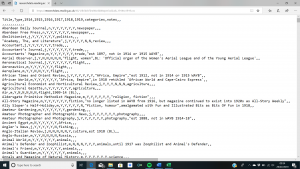
While the focus of our National Lottery Heritage Funded project is The War Illustrated, I thought it might be useful to provide some context. The above table, and some of the below comment, place The War Illustrated alongside other British war-time publications which were available to the public at the time. Kate Macdonald, previously of the University of Reading, has provided a very useful document which lists over a thousand publications which ran for some, or all, of the 1914- 1919 period: https://researchdata.reading.ac.uk/46/1/BritishFirstWorldWarperiodicals_1914to1919.csv From the main page of her project (http://researchdata.reading.ac.uk/46/) it is possible to download a word document which outlines Macdonald’s methodology. This document lists publications alphabetically, with the title followed by M or N indicating its type – whether it is a magazine (in the table above I have highlighted these pink) or a newspaper (coloured grey in the table). Furthermore, Macdonald places either a Y or a N in columns representing 1914, 1915, 1916, 1917, 1918 and 1919 to show if the publication was present for that year. The category of the publication (e.g. war) is then provided. Macdonald also offers other notes and comments (for example on amalgamations) and gives a reference when the source of her data is not A&C Black’s Writers’ and Artists’ Yearbook 1914-1919 which furnished literary links to its readers. (If you are interested in reading more of Macdonald’s work, her list of WWI publications informs her chapter ‘Popular magazines’, in The Edinburgh Companion to the First World War, edited by Ann-Marie Einhaus (Edinburgh University Press, 2017.))
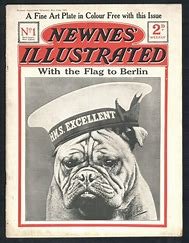
For the purposes of my table, it has been necessary for me to not just select, but to simplify, some of Macdonald’s data. I have included only those which Macdonald categorises as war publications. (Although those categorised as military may also be of interest.) Sometimes a publication’s category is evident by its title (e.g. The War Illustrated), but on occasion this is less obvious (e.g. Newnes’ Illustrated) and I am unsure on what information Macdonald has relied. Macdonald lists all publication titles separately, but when her notes definitively state that one publication became another, also named publication, I have treated this as a single publication and used ‘/’ to indicate this. Penny War Weekly became Vivid War Weekly in 1915 (Macdonald indicates that this information is from the British Library); War Picture Weekly turned into London Illustrated Weekly in 1915 (this information is apparently also from the British Library) and more simply War Pictorial changed to British War Pictorial in 1918. On occasion, Macdonald also notes when a war publication’s title has not changed, but it has amalgamated with another publication: e.g. according to Black’s Writers’ and Artists’ Yearbook The War Budget amalgamated with Everyweek in 1918. Since my focus is on war publications and presumably The War Budget kept its title, and readership, Everyweek has not been mentioned in the table.
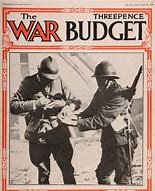
In addition to remarks about title changes and some amalgamations, some of which information is provided by the British Library, Macdonald notes other interesting aspects and her sources for these. In the war publications this includes information from SOLO – the catalogue of Oxford’s Bodleian library – for the publications Newnes’ Illustrated and Penny War Weekly. (You can find SOLO here: http://solo.bodleian.ox.ac.uk/primo-explore/search?vid=SOLO&lang=en_US&sortby=rank) Another useful source is COPAC (the Consortium of Online Public Access Catalogues: https://copac.jisc.ac.uk/ ). This reveals that The Great War was ‘very irregular’ (one of the few comments on frequency) and information about War of the Nations including the fact that this publication’s editors were William Le Queux and Edgar Wallace.
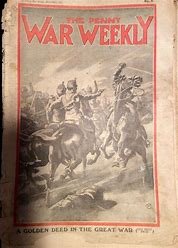

Not all of Macdonald’s information is clear-cut. In The War Illustrated section, she notes that according to SOLO the magazine was ‘apparently’ previously called Vivid War Weekly. Her Vivid War Weekly section expresses doubt about this, as information that the magazine ‘apparently turned into The War Illustrated’ ends with a question mark. (No source is given, so perhaps the information from SOLO about The War Illustrated has been supported by that from Black’s.) Because The War Illustrated is our main focus this is worth pondering further. Looking at the dates of the magazines, I would say that Macdonald is right to be dubious since The War Illustrated was established in 1914, well before the end date of Vivid War Weekly (1916). It may be that some sort of merger or perhaps more likely that Vivid War Weekly was folded into The War Illustrated. This is not the same as a simple title change and is perhaps more akin to The War Budget amalgamating with Everyweek.
I have also interpreted some information myself when trying to simplify Macdonald’s data. Macdonald lists two publications as having the title War Pictorial, both of which are magazines and categorised as ‘war’. The first is only present in 1914, the second from 1914 to 1919 inclusive. Macdonald cites SOLO as revealing that the first only lasted a few issues in October 1914. Since the publisher’s name is not provided it is unclear if this is from the same creative team. I have nonetheless treated it as one publication as it seems unlikely that two publications would have shared the same title at the same time. Perhaps the first few issues served as a pilot run of sorts, and if the magazines are available to view online this could be explored further.
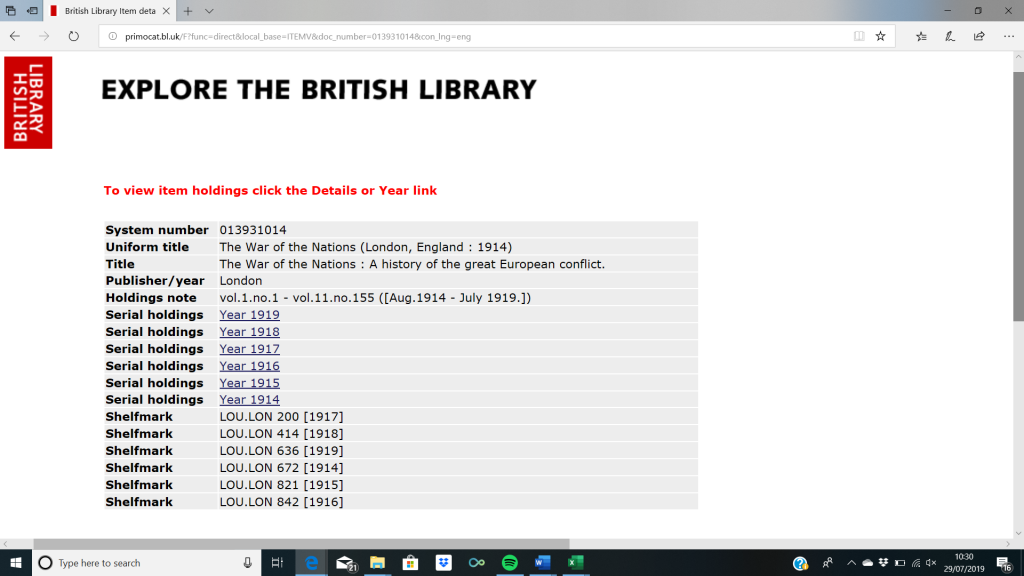
I have previously tried to contextualise Macdonald’s data by looking at the British Library’s holdings on general war-time periodicals. Unfortunately the webpage I consulted (http://www.bl.uk/reshelp/findhelprestype/news/britmilhist/scopecollections/scopebritmilhist.htm) is no longer available. Individual publications’ titles can be searched for on the British Library catalogue, however. For example, the details for War of the Nations can be found here: http://primocat.bl.uk/F?func=direct&local_base=ITEMV&doc_number=013931014&con_lng=eng Interestingly this lists the magazine as running from 1914-1919 although Macdonald considers it to exist only from 1917-1919.

While the table oversimplifies some aspects of Macdonald’s work, and indeed some information from other sources such as the British Library, it allows us to make some observations. There are three war magazines which ran for the entire 1914-1919 period. This excludes War of the Nations since this is not listed as running for this period in Macdonald’s document, but includes War Pictorial. Because there may have been a break in the publication of the latter title, or indeed this may have been two separate publications, the most important war magazines seem to be The War Illustrated and Illustrated War News. We have several paper copies of the Illustrated War News and have noted that this was three times the price of The War Illustrated. (This was part of our argument for digitizing The War Illustrated since it would have been more within the reach of the working man and woman.) The Illustrated War News also contains more pages than The War Illustrated. These aspects can be seen on the Heritage Lottery Funded website which gives access to the London Illustrated News archive: https://www.illustratedfirstworldwar.com/discover Examination of the physical copies of the Illustrated War News reveals that they are also printed on thicker, better quality, paper than The War Illustrated. This partly justifies its higher price, and perhaps signals the preference of its readers. While there is already so much to research in the copies of The War Illustrated on the Internet Archive, comparison to The War Illustrated further contextualises the magazine. Analysing the Illustrated War News for content, and possible crossover in personnel (including writers), would highlight whether The War Illustrated was representative, or not, of other war publications at the time. This could help us to weigh up whether conclusions about The War Illustrated can be extrapolated to other war-time publications, arguably meaning that the publication’s content has a longer reach.

